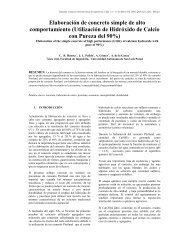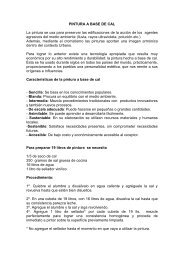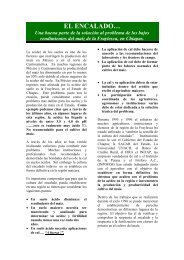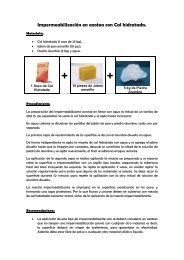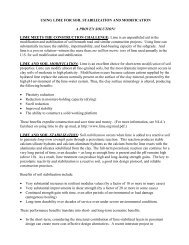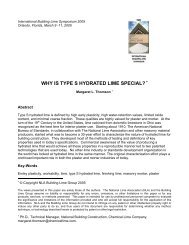Land Contamination: Technical Guidance on Special Sites: Acid Tar ...
Land Contamination: Technical Guidance on Special Sites: Acid Tar ...
Land Contamination: Technical Guidance on Special Sites: Acid Tar ...
Create successful ePaper yourself
Turn your PDF publications into a flip-book with our unique Google optimized e-Paper software.
• all pers<strong>on</strong>nel should follow a dec<strong>on</strong>taminati<strong>on</strong> process that should c<strong>on</strong>sist of, at aminimum, the removal of overalls and boots, and the washing of hands and face.The relative importance of each of the above will depend to some extent <strong>on</strong> the kind of acidtar (e.g. whether there was pre-treatment to reduce acidity) and the age of the deposit. Withregard to stability issues, the lago<strong>on</strong> surface may be relatively solid, especially during winter,while in summer, warming of the tars will lead to softening and expansi<strong>on</strong>, leading to a loss ofbearing capacity and surface spreading. If there is sufficient local knowledge about aparticular site (e.g. if it is known to have been covered and is now tracked over by various sitevehicles) then it may be possible for staff to walk <strong>on</strong> the site surface. However, if there islimited/no local knowledge then sites must be c<strong>on</strong>sidered unsafe and further informati<strong>on</strong>should be gathered to determine whether the site is safe to walk <strong>on</strong>.Further practical risk management issues to c<strong>on</strong>sider when undertaking site works <strong>on</strong> acid tarlago<strong>on</strong>s include the following:• access to the lago<strong>on</strong>s themselves should be restricted to prevent pers<strong>on</strong>nel fromwalking across the site and limited to those working <strong>on</strong> the site.7.3.2 Equipment• PPE should be worn at all times to protect the skin from acid burns and c<strong>on</strong>tact withhydrocarb<strong>on</strong>s and heavy metals. In many cases the pH may be 2 or lower and in somecase below pH 1. Protective equipment should include acid resistant boots togetherwith disposable overalls and gloves as a minimum. On some sites the tars may be of amore hazardous nature requiring the use of gloves, boots, overalls etc. made ofchemical resistant (as well as acid resistant) materials (e.g. chlorinated polyethylene,vit<strong>on</strong>, neoprene or PVC);• eye protecti<strong>on</strong> should also be worn. Where vapours are not a problem safety gogglesmay be sufficient. Full face masks may need to be worn dependent <strong>on</strong> the results ofvapour m<strong>on</strong>itoring. Of particular c<strong>on</strong>cern are acidic vapours, also hydrogen sulphideand sulphur dioxide as well as lighter hydrocarb<strong>on</strong>s which may be present within thetar.As indicated previously, Table B.1 in Appendix B provides a list of c<strong>on</strong>taminants that couldbe present within acid tar lago<strong>on</strong>s and this can be used in health and safety planning.R&D <str<strong>on</strong>g>Technical</str<strong>on</strong>g> Report P5-042/TR/04 47




